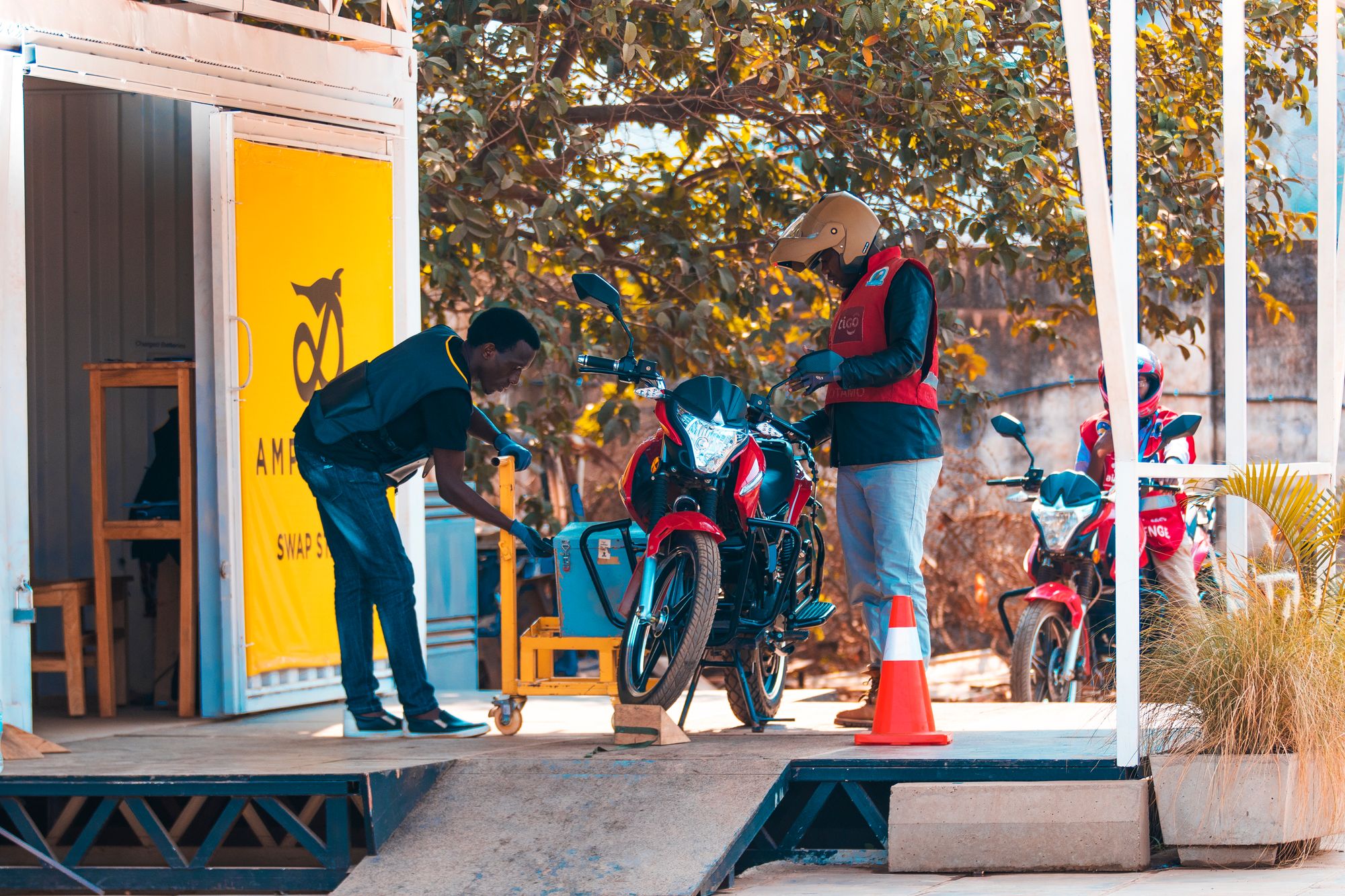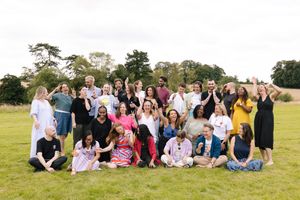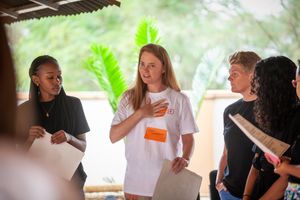
We know that money shapes our world - it shapes which ideas are able to grow, which fail. What gets invested in, and what scales, matters. And it is not just a question of what gets invested in, but also how that money is designed, delivered and returned. It is different financial mechanisms, such as debt or grants, that shape whether money acts as a lever of change.
Grants are a type of financial mechanism where a sum of money is given to people or organisations to do a thing without the expectation that they will be returned or paid back. This blog post emerges from a conversation between Lea Simpson and myself, and explores grants and what we’ve learnt about how they can be designed and crafted to invest in scaling impactful ideas , while contributing to change at a systems level.
Years of grantcraft and supporting innovators at Brink has shaped how we look at investments that make change happen. We manage funds across a spectrum from early-stage, R&D projects designed to test bold new ideas such as Frontier Technologies Livestreaming, to addressing some of the world’s most endemic issues, requiring more systemic approaches, such as the Oxygen CoLab which is looking to accelerate global access to oxygen in low-resource settings by working on market readiness and technology issues concurrently.
Through the experience of designing grant funds that drive innovation , we have learnt lessons about designing and crafting grants, what grants are good (and not so good) for and how they can make a dent in tackling non-trivial challenges.
Lesson #1: A clear thesis can anchor the grants through storms and high tides
Grants are a way to contribute to building the world we’d like to see. At the core of how grants are designed, we should be asking the question: what kind of change are you trying to contribute to? Your thesis is the clear understanding of the change and impact you’re trying to make with the money, and it is also what steers your portfolio as you learn.On March 19th 2020, we launched Covid Action, an initiative with a thesis to make sure that hospitals in low and middle income countries had the equipment, tools and support to treat people with respiratory problems. Initially, we looked for rapidly manufactured ventilation systems. Less than a month later, we launched a platform housing COVID-19 related IP for download and use the world over, yet this platform didn’t feature a single ventilator. In that month, we learnt more about the disease, shifts in the regulatory environment, and about the needs of different countries. We were able to do this because our thesis was clear. As we learnt more and more, we were able to pivot what we invested in and how, while keeping the thesis held our why.
Lesson #2: Grants are one part of a wider context and innovation ecosystem
Grants need to be designed and treated as one part of a wider context and funding ecosystem. At the core, we have learnt that grants are most effective when we understand their role within a specific context and sector, and when they’re alongside other instruments, such as debt, government financing or bonds. In short, it’s important to know: why this fund, why here and why now?
By having clarity on how grants contribute to building and supporting a pipeline of innovations to scale, we can answer questions such as:
- How does the grant enable tested, impactful innovations to access further funding?
- How does it support the innovations to position themselves in the eyes of users, governments and investors?
- How does this grant de-risk investments for the private sector?

An example of this is Ampersand, an electric motorcycle provider in Rwanda. The Frontier Technologies Hub provided a grant for 18-months to test whether electric motorcycles could decrease transport costs for customers, improve livelihoods for drivers and reduce carbon emissions. We leveraged the grant to test with a small pool of motorcycles and learnt that rent-to-own and pay-per-swap models increased the driver’s revenue, that the solution needed to be modular to enable flexibility, and that the design needed to be as comparable to existing models.
These insights, in turn, enabled Ampersand to access $3.5m in venture capital to scale their operations to a large number of motorcycle taxis in multiple East African countries over 10 years.
Lesson #3: Grants can de-risk future investing in innovation
In an ideal world, innovations that save lives and transform communities would scale to achieve their greatest impact potential. In reality, a number of factors hinder innovators’ ability to scale, such as constrained public budgets, an undervaluing of positive externalities, and a lack of information about the markets and sectors that could have widespread impact.
For example, private investors look to invest in ventures which make fast financial returns. Without these proofs, innovations are perceived as risky, with uncertain horizons for financial or impact returns. This is compounded in low and middle income countries where the contexts and innovations are seen as inherently risky, compared to Silicon Valley for example. On the other hand, governments looking to embed innovation in their services need rigorous evidence of impact and value for money. At Brink, we factor what innovators need to continue making a dent in the problem beyond our investment, and design the grants to de-risk the innovation for others in the future on behalf of the problem
Through the Frontier Technologies Livestreaming fund, FCDO funded Onyx to test pay-as-you-go bicycles in rural Zambia. They believed that the adoption of bicycles as part of a “payment in increments” model could increase ownership of bicycles in the poorest parts of Zambian society. Additional technologies, such as mobile money and GPS technology, could help improve access and ensure payment collection.
No one would fund this in a traditional venture capital setting because there was no proprietary technology or IP, but it was rather a “tech-stack” that used existing technology in a novel use case. There were also doubts as to whether this business model could work in rural, low income settings. Grants enabled Onyx to test their business model, get market traction, and generate investment from corporates in Zambia who wanted bicycles for their employees.
Onyx now has 2,500 bicycles under contract for employee schemes, which made a cross-subsidy model possible, meaning they are now operating sustainably without grants.
Lesson #4: Grants are catalytic, at their best
Scale can mean different things to different organisations. For example, some innovations look to scale by being adopted and integrated within a government service, such as an AI solution looking to improve government diagnosis in South Africa. Others scale by looking to reach more paying customers, such as Wazi which is trying to increase access to African-made eyewear. For others, ongoing grant funding to subsidise costs and increase access can be the path to scale. We’ve learnt that grants need to be designed to foster an intentional, viable and sustainable path to scale tailored to the problem and solution.
In the social innovation ecosystem, we’ve often observed innovations being continuously funded by grants without clarity or proof of their pathway to scale. Therefore, it's important to choose the right grant size, sometimes keeping things intentionally small, and being catalytic, in service of the grantees’ scaling stage, path and long-term goal.
Through our work, we’ve learnt that relatively small grants can be a beautiful constraint between our teams and the grantees to think about how to best use the limited, catalytic opportunity of working together. These small grants enable us to ask each other: what do we need to prove, to whom, and how can this small amount of money, with proofs and cost-corrections, set that ship off at sea? Often a small grant amount is a great way to test a new idea or transformative business model that could have a significant impact on the organisation overall, and on global investment coming down the line. Through ATIF, we funded Koalaa, a British prosthetics manufacturer that was looking to make their prosthetics available in Sierra Leone. We gave them two grants totaling £90,000, and worked with them to leverage the money so that their impact could extend beyond the grant. They used the money to set-up a partnership with the Ministry of Sierra Leone, which enabled them to operate in clinics, to train public health clinicians in their prosthetics, and to import their prosthetics tax-free while they set-up their in-country manufacturing capacity. Instead of using this small grant to offer prosthetics for a set-amount of people, they catalysed it so that they could operate in Sierra Leone more cheaply and freely, which then also enabled them to be in advanced discussions with several donors and investors who have valued that they were established.
Lesson #5: Grant mechanisms should be designed around your thesis
At the core of your grant is your thesis, and so all the mechanisms for sourcing, selecting, driving and reporting on those grants should be designed in service of it.
For example, the Frontier Tech Livestreaming grants, designed with DT Global, aim to support FCDO staff to use frontier technologies, like Web 3.0 or 3D printers, to tackle some of the biggest challenges in global development. We don’t know much about frontier technologies, and we specifically don’t know much about how they’re applied to have a positive impact in low and middle income countries. So these grants are exploratory, and their thesis is focused on supporting people to learn about whether those technologies are actually useful for development.
However, traditionally, the impact sector is designed so that grantees are incentivised to tell their grant-makers what they think they want to hear, and we wanted to change it up. To be truly exploratory, the Livestreaming grants need to be designed to make sure that the answer to the exploration can be ‘no / it doesn’t work, / it’s not impactful / it won’t scale’. In order to welcome a ‘no’, we work with innovators to test the most critical assumptions, and allow them to iterate their sprints based on learnings. The payment disbursements are based on learnings, not on success - compared to the traditional payments by results. So that regardless of what they learn, they’re paid if they learn something.
Lesson #6: Funding teams needs to be centred on trust
Grants are not a way to subcontract teams to meet your needs. They are a mechanism to foster and invest in teams with ideas that could contribute to your thesis and impact. Grants need to serve to empower the people and teams who breathe the problem, inhabit the context, and embed their values in their work.
No matter how good the tech is, how connected they are, how amazing the evidence of impact is, if the teams and relationships are not based on trust, if you can’t work well together around the problem you’re tackling, then you’re not onto a good thing. This is not about finding organisations that think or work like you, that’s boring and nepotistic, and won’t lead to better ideas. It’s about working with organisations that foster local talent, that treat their teams and relationships with respect - and this isn’t built overnight. When we work with teams, we don’t set out a work plan or budget for them, we work with them to have a clear, common vision of the problem and the idea, and foster them to work to tackle it.
Through the Oxygen CoLab, we are working with six grantees to understand the potential for Oxygen-as-a-Service to increase access to oxygen and save lives in low income, rural settings. Over the last year, we’ve worked with one of these grantees, FRE02, to provide clarity on what our aim is, what their goals are, and how they align. Doing this has grown our relationship with FRE02 that expands beyond the typical funder-grantee relationship, becoming open, reliable and transparent. This has enabled us to not only work with them to test their business model, but also has empowered them to share lessons freely with other grantees in order to shift the whole sector, and meant that they’re inviting us to key meetings with government partners. Along the way, we’ve also learnt about the key factors for when and how oxygen concentrators can make a dent.
This blogpost is part of an exploration that myself, Lea and others at Brink are undertaking to explore different financial mechanisms, and the role they can play in making a dent. I’d love to grab a coffee and hear from you! Email me at [email protected]




